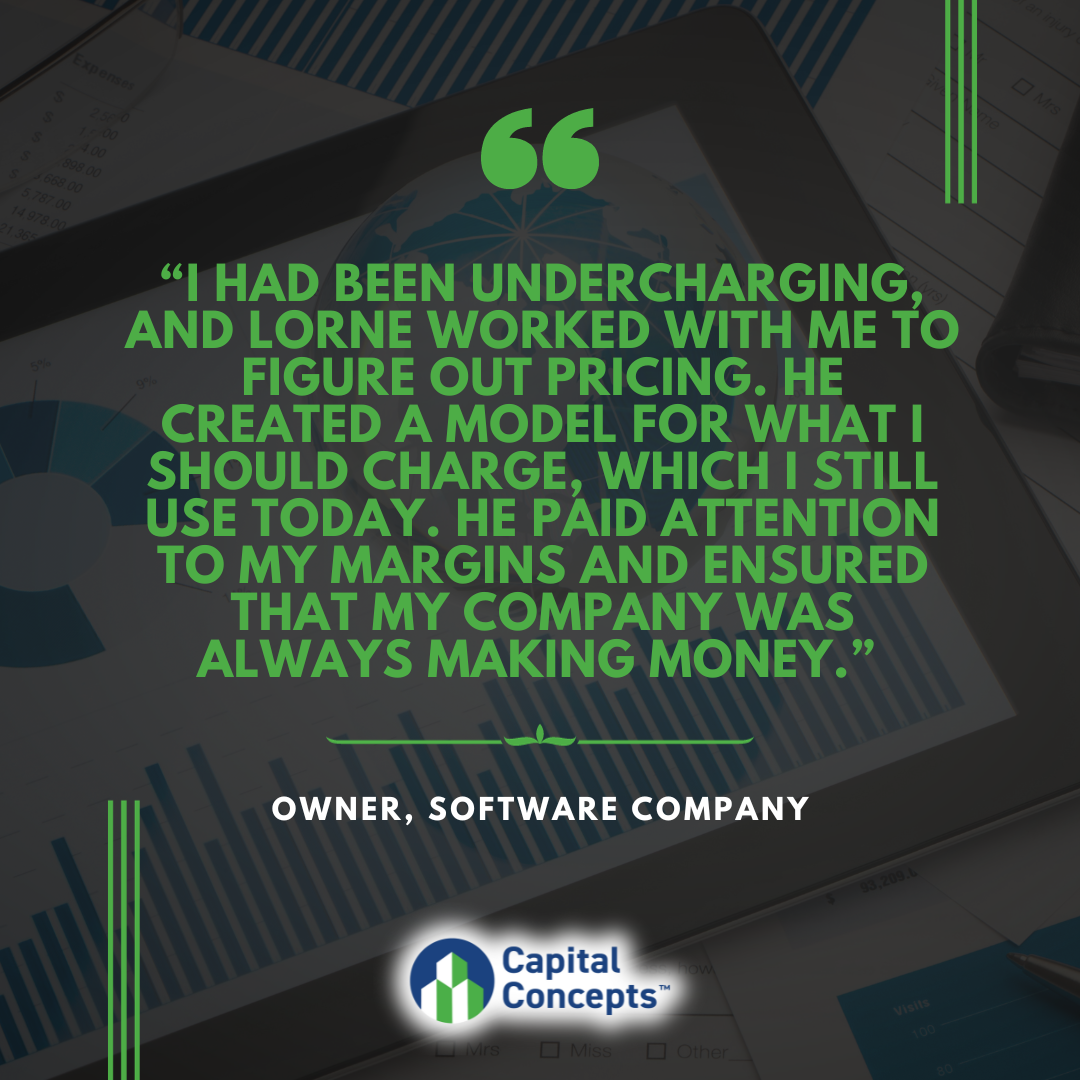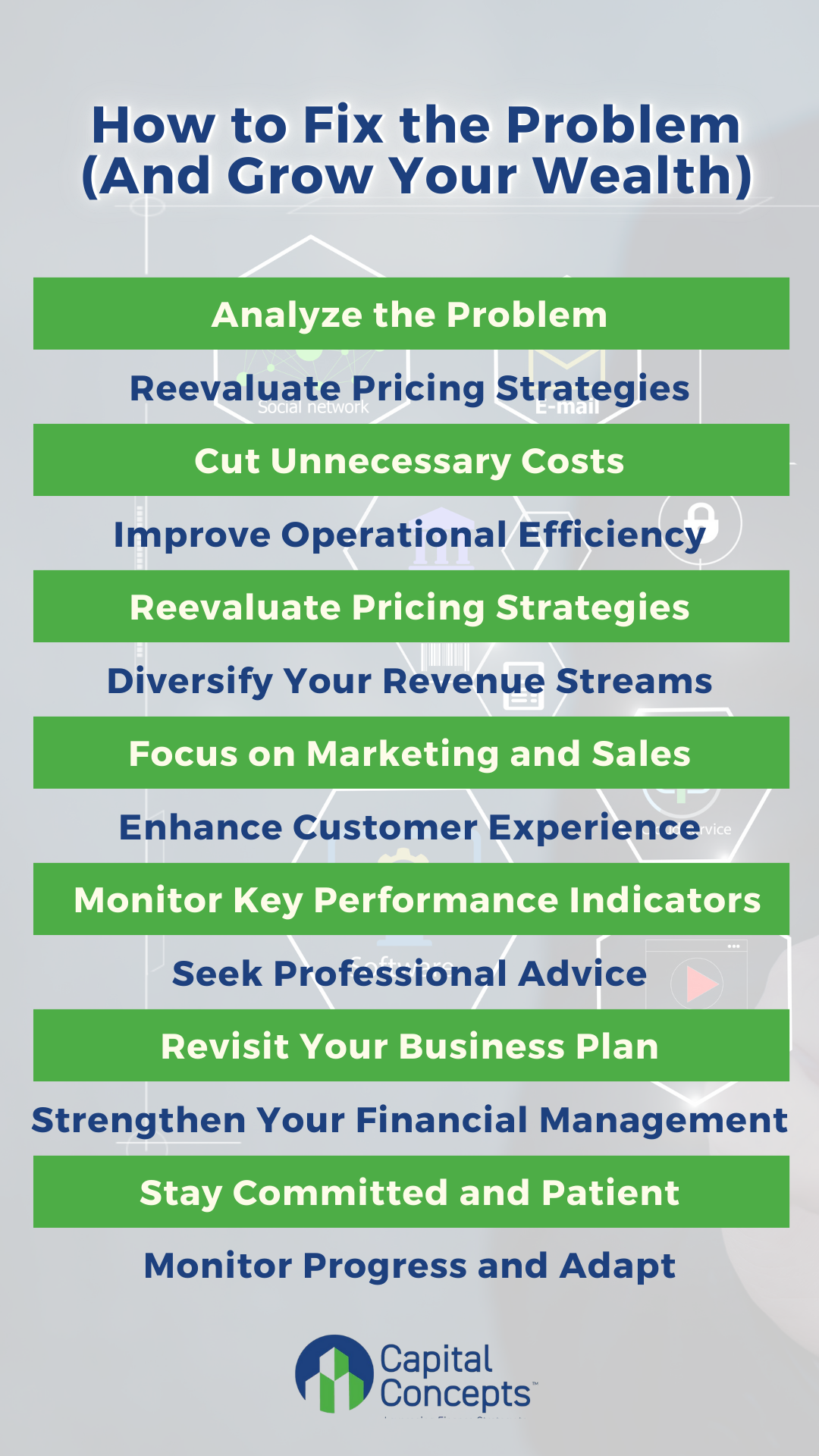The Hidden Threat: An Unprofitable Business Model
You’re working hard. Your business is growing. But the numbers tell a different story. Despite all your effort, profits aren’t where they should be—or worse, your business is losing money. Sound familiar? You’re not alone. Many owners unknowingly operate on an unprofitable business model, not realizing the hidden gaps draining their bottom line.
The good news? Once you identify the problem, you can fix it. And that’s where real financial success begins.
Your Business Is Growing—So Why Aren’t You Making Money?
A business without a profitable model is like a boat with a leak- no matter how fast you row, you’re still sinking. If you don’t fix the underlying issues, you’ll:
- Keep working long hours with little financial return
- Struggle with cash flow and uncertainty
- Hit a ceiling on growth, unable to scale or invest
- Risk eventually shutting down
That was the reality for one business owner I worked with. Despite rapid growth and strong sales, she wasn’t making a profit. Her bank account told a different story than her revenue numbers.
After digging into her numbers, we uncovered the issue—she had no clear way to calculate the cost of delivering her product. Without that, she couldn’t build in the right margins. She was essentially guessing at her pricing—and it was costing her.
We worked together to fix this. By identifying her true costs, restructuring her pricing, and improving operational efficiency, she not only doubled her revenue but—more importantly—became profitable.
This happens more often than you’d think. Many businesses owners undercharge without realizing it. If your pricing, cost structure and operations aren’t aligned, no amount of effort will move you forward. Fix the math, and you fix the business.

“I had been undercharging, and Lorne worked with me to figure out pricing. He created a model for what I should charge, which I still use today. He paid attention to my margins and ensured that my company was always making money.” —Owner, Software Company
Common Mistakes That Kill Profitability
Many businesses fail not because they lack customers but because they’re using an unsustainable model. Here are the four most common culprits:
Faulty Pricing Strategy
Many businesses make the mistake of charging too little for their products or services, leaving them with a minimal profit margin. Analyze your costs of production and current market trends, and price your offerings at a level where you can generate enough revenue to cover your expenses and see a decent return on investment.
Underinvestment in Resources
Inadequate systems, processes, and technology can seriously impact profitability. If you lack these or have outdated and inefficient systems, it increases the time needed to design, produce, market, deliver, and more. This in turn increases labor and/or material expenses.
While it costs money, investing in necessary tools and personnel upfront helps optimize operations, reduce expenses, and maximize profits over time. We often assist our clients with financing these investments when cash flow is a problem.
Lack of Innovation
Markets are constantly changing, so staying up-to-date with industry trends is essential for remaining competitive. Creating value for customers sets you apart from competitors. If you aren’t willing to innovate or adapt your products or services to meet customer demands, you won’t be able to compete effectively. This will eventually lead to declining profits.
Overhead Costs
High overhead costs such as rent/mortgage payments, utilities bills, employee salaries, etc., can all eat away at your bottom line if not managed properly. Track these expenses carefully so they don’t become unmanageable debt. This includes negotiating better terms with suppliers if possible. You may be able to salvage an unprofitable business model by taking steps like these. Failing to recognize the situation or take corrective action could lead you to insolvency, or worse, bankruptcy.
How to Fix an Unprofitable Business Model
We’ve identified key issues—so what’s next? How do you fix these problems, especially
when they’re deeply ingrained in your business model?
Let’s talk about real solutions. I’ve helped business owners overhaul their profitability, and here’s what we focus on:
1. Identify the Profit Leaks
Start by conducting a thorough analysis of your financial statements, including income statements, balance sheets, and cash flow reports.
Action Step: Pinpoint where your business is losing money. Is it pricing, high operational costs, weak sales, or a combination?
2. Set Profitable Pricing
Your pricing should reflect both the true cost of delivery and a healthy profit margin.
Action Step: Build or revisit your pricing model. Make sure it includes labor, overhead, and hidden costs. Explore dynamic pricing, bundling, or tiered pricing if appropriate.
3. Cut Costs Without Sacrificing Quality
High overhead and unnecessary expenses silently drain profits.
Action Step: Audit operational costs and identify areas to cut expenses: renegotiate vendor contracts, optimize inventory, and streamline the supply chain.
4. Optimize Efficiency with Smart Systems
If your operations aren’t running smoothly, profit will always be an uphill battle.
Action Step: Evaluate your workflows and look for inefficiencies. Investing in automation and better systems can reduce labor costs and boost productivity.
5. Expand and Diversify Revenue Streams
Relying on one product or service can leave you vulnerable.
Action Step: Explore complementary offerings, enter new markets, or create partnerships to stabilize and increase revenue.
6. Align Your Sales and Marketing
A profitable business needs an effective customer acquisition strategy.
Action Step: Reassess your sales funnel. Are you targeting the right audience? Are your marketing and sales teams aligned? Adjust your approach to improve conversion rates.
7. Prioritize Customer Experience for Repeat Business
Loyal customers drive profitability through repeat purchases and referrals.
Action Step: Actively gather customer feedback and refine your offerings to exceed expectations.
8. Track Key Metrics Religiously
What gets measured gets managed.
Action Step: Monitor your revenue, margins, cash flow, and other key performance indicators (KPIs) regularly to catch issues early.
9. Seek Expert Guidance When Needed
A fresh perspective can help you spot solutions you might have missed.
Action Step: Consult financial advisors or business consultants for insights tailored to your situation. We offer complimentary consultations—sign up here to see if we’re a good fit.
10. Reevaluate and Strengthen Your Business Plan
Your original business plan may no longer align with your current goals.
Action Step: Update your strategy to reflect new profitability goals and operational changes.
11. Maintain Strong Financial Discipline
A profitable business isn’t just about revenue—it’s about financial management.
Action Step: Keep a close eye on cash flow, manage working capital wisely, and explore funding options if necessary.
12. Stay Patient and Committed to Change
Turning a business around isn’t instant—it’s a process.
Action Step: Implement changes consistently and adapt as needed. Flexibility is key in a shifting business landscape.
13. Know When to Pivot or Exit
Not all businesses can (or should) be saved in their current form.
Action Step: If profitability remains elusive despite all efforts, explore exit strategies like selling, restructuring, or pivoting to a more viable model.
Keep Moving Toward Profitability
A profitable business isn’t built on guesswork – it’s built on strategy. Small adjustments in pricing, operations and marketing can lead to major financial improvements. The key is knowing where to focus your efforts.
If you’re looking for ways to strengthen your business model, start by assessing what’s working and where you might be leaving money on the table. Need a second opinion? I’m always open to discussing ideas with business owners who want to improve their profitability. Schedule a call.
For more insights, explore our latest articles on business growth, financial strategy, and exit planning.
Related Articles
Get A Grip Roundtable
Does This Sound Familiar? Your business isn't as efficient or profitable as you'd like. You’re putting in the hours but not seeing the results you want. You’re stuck. You know your business has potential, but you're unsure how to take it to the next level. You’re...
Build & Beware: What it might cost you to sell your business
You Just Sold Your Business for Millions – So Why Isn’t That in Your Bank Account? The papers are signed. The deal is closed. After years of hard work, you’re ready to celebrate your big payday. But as you finalize accounts and tie up loose ends, you realize the...
Eight Ways to Exit Your Business
When it comes to exiting a business, most people assume there is only one way out: sale. But actually, there are 8 distinct ways to exit a business. Before considering your next move, it’s crucial that you understand each of these options to determine which is best...
Need Fresh Eyes On Your Business?
We offer complementary consultations to help you identify the areas where you could most quickly and easily improve your business’s performance, value, and profitability. Request one today.


